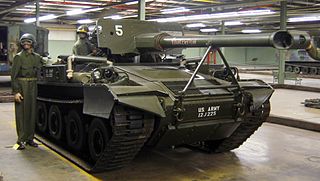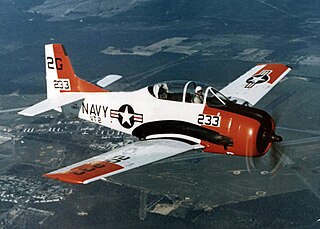Self-guided Sightseeing Tour #1 in Seoul, South Korea
Legend
Guided Free Walking Tours
Book free guided walking tours in Seoul.
Guided Sightseeing Tours
Book guided sightseeing tours and activities in Seoul.
Tour Facts
0.5 km
5 m
Experience Seoul in South Korea in a whole new way with our free self-guided sightseeing tour. This site not only offers you practical information and insider tips, but also a rich variety of activities and sights you shouldn't miss. Whether you love art and culture, want to explore historical sites or simply want to experience the vibrant atmosphere of a lively city - you'll find everything you need for your personal adventure here.
Activities in SeoulIndividual Sights in SeoulSight 1: M46 'Patton' Tank (U.S.A.)
The M46 Patton is an American medium tank designed to replace the M26 Pershing and M4 Sherman. It was one of the U.S Army's principal medium tanks of the early Cold War, with models in service from 1949 until the mid-1950s. It was not widely used by U.S. Cold War allies, being exported only to Belgium, and only in small numbers to train crews on the upcoming M47 Patton.
Sight 2: M36 Tank (U.S.A.)
The M36 tank destroyer, formally 90 mm Gun Motor Carriage, M36, was an American tank destroyer used during World War II. The M36 combined the hull of the M10 tank destroyer, which used the M4 Sherman's reliable chassis and drivetrain combined with sloped armor, and a new turret mounting the 90 mm gun M3. Conceived in 1943, the M36 first served in combat in Europe in October 1944, where it partially replaced the M10 tank destroyer. It also saw use in the Korean War, where it was able to defeat any of the Soviet tanks used in that conflict. Some were supplied to South Korea as part of the Military Assistance Program and served for years, as did re-engined examples found in Yugoslavia, which operated into the 1990s. Two remained in service with the Republic of China Army at least until 2001.
Sight 3: M47 'Patton' Tank (U.S.A.)
The M47 Patton was an American medium tank, a development of the M46 Patton mounting an updated turret, and was in turn further developed as the M48 Patton. It was the second American tank to be named after General George S. Patton, commander of the U.S. Third Army during World War II and one of the earliest American advocates of tanks in battle.
Sight 4: M4A3E8 Sherman Tank (U.S.A.)
The M4 Sherman, officially medium tank, M4, was the medium tank most widely used by the United States and Western Allies in World War II. The M4 Sherman proved to be reliable, relatively cheap to produce, and available in great numbers. It was also the basis of several other armored fighting vehicles including self-propelled artillery, tank destroyers, and armored recovery vehicles. Tens of thousands were distributed through the Lend-Lease program to the British Commonwealth, Soviet Union, and other Allied Nations. The tank was named by the British after the American Civil War General William Tecumseh Sherman.
Sight 5: K200 Korean Infantry Fighting Vehicle (Korea)
The K200 KIFV is a South Korean armored personnel carrier, originally produced by Daewoo Heavy Industries as a domestic replacement for older armored personnel carriers, such as the M113, in front line service with the Republic of Korea Armed Forces at the time of the K200's development. Since 2009 the K200 has been supplemented by the K21. A total of 2,383 K200 vehicles of all configurations were produced between 1985 and 2006, among which are 111 K200A1 vehicles exported to Malaysia.
Sight 6: M113A1 Armored Personnel Carrier (U.S.A.)
The M113 is a fully tracked armored personnel carrier (APC) that was developed and produced by the FMC Corporation. The M113 was sent to United States Army Europe in 1961 to replace the mechanized infantry's M59 APCs. The M113 was first used in combat in April 1962 after the United States provided the South Vietnamese army (ARVN) with heavy weaponry such as the M113, under the Military Assistance Command, Vietnam (MACV) program. Eventually, the M113 was the most widely used armored vehicle of the U.S. Army in the Vietnam War and was used to break through heavy thickets in the midst of the jungle to attack and overrun enemy positions. It was largely known as an "APC" or an "ACAV" by the allied forces.
Sight 7: KM900 Light Armored Vehicle (Korea)
.jpg)
The Fiat CM6614 is a 4x4 wheeled armoured personnel carrier developed as a joint venture between Fiat and Oto Melara of Italy. The hull is welded steel, and the vehicle is amphibious. The first prototype was built in 1972.
Sight 8: M577 Command Post Carrier (U.S.A.)
A huge number of M113 armored personnel carrier variants have been created, ranging from infantry carriers to nuclear missile carriers. The M113 armored personnel carrier has become one of the most prolific armored vehicles of the second half of the 20th century, and continues to serve with armies around the world in many roles.
Wikipedia: Variants of the M113 armored personnel carrier (EN)
Sight 9: K-1 Tank (Korea)
The K1, also known as Type 88 by American engineers, is a South Korean main battle tank designed by Chrysler Defense and Hyundai Precision Industry for the Republic of Korea Armed Forces. The vehicle's design was based on technology from Chrysler's M1 Abrams, tailored to meet the ROK's unique requirements. The K1A1 is an up-gunned variant with a 120 mm 44 caliber smoothbore gun, and outfitted with more modern electronics, ballistic computers, fire control systems, and armor. Hyundai Rotem produced 1,511 K1 and K1A1 tanks between 1986 and 2011.
Sight 10: M56 Scorpion Self-Propelled Gun (U.S.A.)
The M56 "Scorpion" self-propelled gun is an American unarmored, airmobile self-propelled tank destroyer, which was armed with a 90mm M54 gun with a simple blast shield, and an unprotected crew compartment.
Sight 11: M48A2C 'Patton' Tank (U.S.A.)
The M48 Patton is an American first-generation main battle tank (MBT) introduced in February 1952, being designated as the 90mm Gun Tank: M48. It was designed as a replacement for the M26 Pershing, M4 Sherman, M46 and M47 Patton tanks, and was the main battle tank of the U.S. Army and U.S. Marine Corps in the Vietnam War. Nearly 12,000 M48s were built, mainly by Chrysler and American Locomotive Company, from 1952 to 1961. The M48 Patton was the first U.S. medium gun tank with a four-man crew, featuring a centerline driver's compartment and no bow machine gunner. As with nearly all new armored vehicles it had a wide variety of suspension systems, cupola styles, power packs, fenders and other details among individual tanks.
Sight 12: M107 157mm Self-Propelled Gun (U.S.A.)
The M107 175 mm (6.9 in) self-propelled gun was used by the U.S. Army and U.S. Marine Corps from the early 1960s to the late 1970s. It was part of a family of self-propelled artillery that included the M110. It was intended to provide long-range fire support in an air-transportable system. It was exported to several other countries including Germany, South Korea, Spain, Greece, Iran, Israel, Italy, the Netherlands, the United Kingdom, and Turkey. The M107's combat history in U.S. service was limited to the Vietnam War; it also saw extensive combat use in Israeli service. The M107 shared many components with, and in many cases was replaced by, later versions of the M110 203 mm (8.0 in) howitzer. Although withdrawn from U.S. service in the late 1970s, it continues to see military service as of 2024.
Sight 13: M110 8 inch Self-Propelled Howitzer (U.S.A.)
The 8-inch (203 mm) M110 self-propelled howitzer is an American self-propelled artillery system consisting of an M115 203 mm howitzer installed on a purpose-built chassis. Before its retirement from US service, it was the largest available self-propelled howitzer in the United States Army's inventory; it continues in service with the armed forces of other countries, to which it was exported. Missions include general support, counter-battery fire, and suppression of enemy air defense systems.
Sight 14: SU-100 Tank Destroyer (U.S.S.R.)
The SU-100 is a Soviet tank destroyer armed with the D-10S 100 mm anti-tank gun in a casemate superstructure. It was used extensively during the last year of World War II and saw service for many years afterwards with the armies of Soviet allies around the world.
Sight 15: Type 63 Amphibious Light Tank (China)
The Norinco Type 63 is a Chinese amphibious light tank. First fielded in 1963, it is in many ways similar to the earlier Soviet PT-76. However, contrary to the popular belief, it does have some essential differences from the PT-76 in the vehicle's waterjet propulsion system, etc. It is also known under its industrial designation, the WZ-211. Type 63 is being replaced by Type 63A.
Sight 16: T59 Tank (China)
The Type 59 main battle tank is a Chinese-produced version of the Soviet T-54A tank, an early model of the ubiquitous T-54/55 series. The first vehicles were produced in 1958 and it was accepted into service in 1959, with serial production beginning in 1963. Over 9,500 of the tanks were produced by the time production ended in 1985 with approximately 5,500 serving with the Chinese armed forces. The tank formed the backbone of the Chinese People's Liberation Army armoured units until the early 2000s, with an estimated 5,000 of the later Type 59-I and Type 59-II variants in service in 2002.
Sight 17: The Korea Peace Bell
The North American Aviation T-28 Trojan is a radial-engine military trainer aircraft manufactured by North American Aviation and used by the United States Air Force and United States Navy beginning in the 1950s. Besides its use as a trainer, the T-28 was successfully employed as a counter-insurgency aircraft, primarily during the Vietnam War. It has continued in civilian use as an aerobatics and warbird performer.
Sight 18: The War Memorial of Korea
Get Ticket*
The War Memorial of Korea (Korean: 전쟁기념관) is a museum located in Yongsan-dong, Yongsan-gu, Seoul, South Korea. It opened in 1994 on the former site of the army headquarters to exhibit and memorialize the military history of Korea. It was built for the purpose of preventing war through lessons from the Korean War and for the hoped for peaceful reunification of North and South Korea. The memorial building has six indoor exhibition rooms and an outdoor exhibition centre displaying war memorabilia and military equipment from China, South Korea and the United States.
Share
How likely are you to recommend us?
Disclaimer Please be aware of your surroundings and do not enter private property. We are not liable for any damages that occur during the tours.
GPX-Download For navigation apps and GPS devices you can download the tour as a GPX file.
.jpeg)
.jpg)
.jpg)

.jpg)
.jpg)
.jpg)

.jpg)
.jpg)
.jpg)
.jpg)
.jpg)
.jpg)
